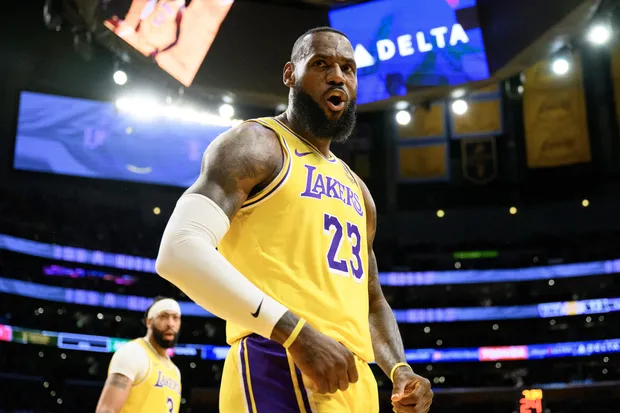The Lakers’ offensive fortunes have finally improved.
The Lakers are on pace to shatter records after years of horribly missed shots and poor scoring. In recent months, they have emerged as one of the league’s top offensive teams.
The Los Angeles Lakers were unable to purchase a bucket three months ago. Their shooters lacked emotion, their missed transition opportunities were almost comical, and their transition to 5-out-spacing seemed dubious at best.
On paper, the Lakers appeared to have the potential to be a formidable offensive club, but both their performance and their working methods were flawed. They were still two games above.500, but their strong defense—which at the time was ranked eighth in stinginess—was primarily to blame for it.
The Lakers’ difficulties with shooting the ball and scoring were nothing new to diehard supporters. It was a repris
e.
Their perimeter players have been seeing hits in their percentages for so long that some have labeled Los Angeles as “The place where shooters go to die.”
The lighting in the Crypto.com Arena, a curse from the basketball gods, or just the extra pressure of wearing purple and gold have all been proposed as conspiracy theories for why.
It seemed that trend would continue this season, regardless of the true reason why their three-pointers consistently seem to hit the back iron and the offense continues to stagnate.
At least it appeared that way.
The Lakers had an offensive rating of 114.3, which placed them 19th in their first 30 games. Nonetheless, the squad has the second-best offensive rating (121.6) in the NBA through their previous 30 games. Over the past six months, a stunning turnaround has transformed the team from a defense-first to one of the top run-and-gun teams.
The first thing that should naturally occur to mind is how? Is it sustainable, too?
The team’s offensive comeback has been influenced by a number of variables.
A lineup adjustment was one of the team’s first moves in an effort to boost their offensive. After benching D’Angelo Russell earlier in the year, Darvin Ham brought him back into the starting lineup in January.
The move gave the team a primary ball handler who wasn’t LeBron James and could start the offense and move the ball quickly, in addition to bringing back Russell’s swagger. Austin Reaves, who has now recovered from his early cold streak, was also able to return to his more natural position as a secondary creator thanks to Russell’s presence.
Eventually, Rui Hachimura would also be included in the starting lineup. Suddenly, the new starting five had weapons at every position. Additionally, since there was no player that defenses could safely exploit, there was greater space and opportunity to take advantage of advantages.
In addition to moving the appropriate pieces into position, the Lakers have improved their playcalling efficiency and diligence.
The squad had growing pains when they switched to 5-out-spacing earlier in the season because players didn’t seem to know where to position themselves, where to attack, or which defensive openings to target.
Since then, there has been a discernible uptick in organizational performance, coinciding with a decrease in freelancing offense. Though they are still there, those spontaneous moments have been superseded by their sets and shows.
The squad’s playbook hasn’t changed much; it still largely consists of the alignments and actions that the club used at the beginning of the season. Yet, both the efficiency and frequency have greatly increased.
In their pick-and-roll game, there are still plenty of tight pindowns, plays out of “Horns,” and emptying of the corner, but they have also added extra elements, such as “Stack” activity, to complement them.
